A true classic, this Ħelwa tat-Tork is a sweet decadently rich treat made from sugar and tahini with a crumbly yet soft texture.
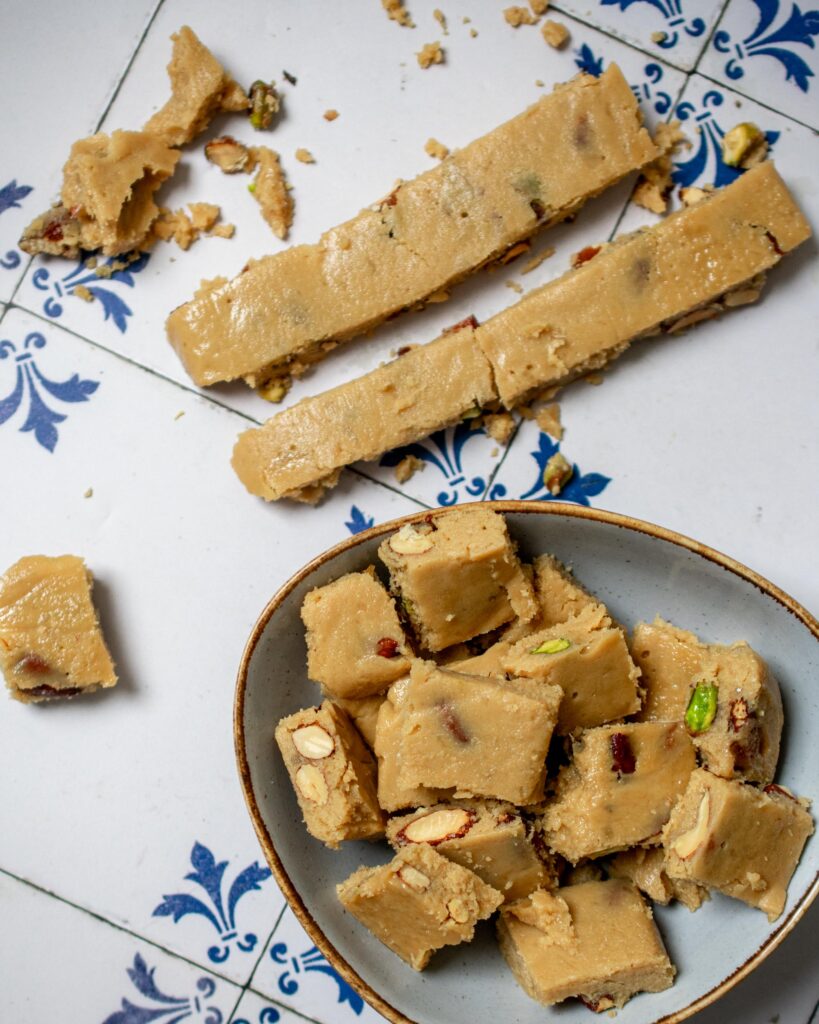
If you are not aware of Malta’s history, this dessert is a true testament of it. Malta over several centuries has been under several different rulers, for it being in a strategic location in the Middle of the Mediterranean. One of the longest and maybe impactful rulers, were the Ottomans. Apart from the language, we have a lot leftover in terms of food. In fact, Maltese cuisine is heavily influenced by Middle Eastern cuisine and if you look closely you will see so many similarities. One of them is this Ħelwa tat-Tork, which basically is the Maltese version of halva. The name in Maltese literally translates to Turkish Halva, thus it kept it’s origin in the name!
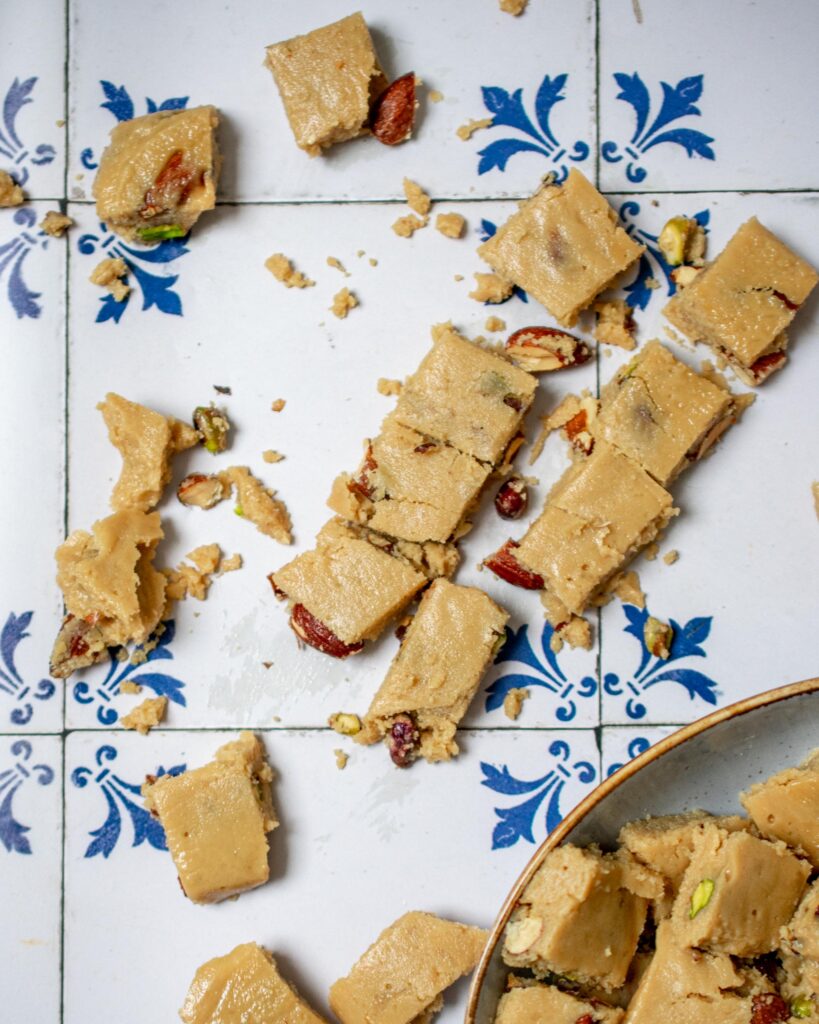
What is Ħelwa tat-Tork?
As already mentioned Ħelwa tat-Tork is the Maltese variant of halva. In short it’s a rich crumbly yet soft fluffy treat made out of tahini (sesame paste), sugar and water. This is then flavoured with vanilla and nuts. The traditional and most popular version on the island contains large whole almonds. I remember my mum buying it from behind the counter and it being weighed out from a huge block. However, in recent years it’s more common to find it ready weighed and packed in plastic containers. As it became more accessible, more new flavours started to be ready available. Although at the end of the day the traditional one is the one containing only whole almonds.

How to make Ħelwa tat-Tork
The first crucial step it to roast the nuts. This will help bring out a richer deeper flavour which willl make our Ħelwa even better! In the meantime in a pot place together the sugar and water over medium heat. Bring everything to a gentle boil and wait until the temperature reaches 120°C/248°F. Place a candy thermometer so that you are precise with the temperature, this will take around 10 minutes. Whilst the sugar is reaching the desired temperature, in a separate bowl mix together the tahini, vanilla, salt and roasted almonds. As soon as the sugar reaches the desired temperature, stream it in gently into the prepared mixture and mix it in. Be careful not to over mix it. In a prepared dish or loaf pan with parchment paper, add the mixture and store in the fridge. I like to let it set overnight before trying to cut through it so that I give it time to set completely and harden as desired.
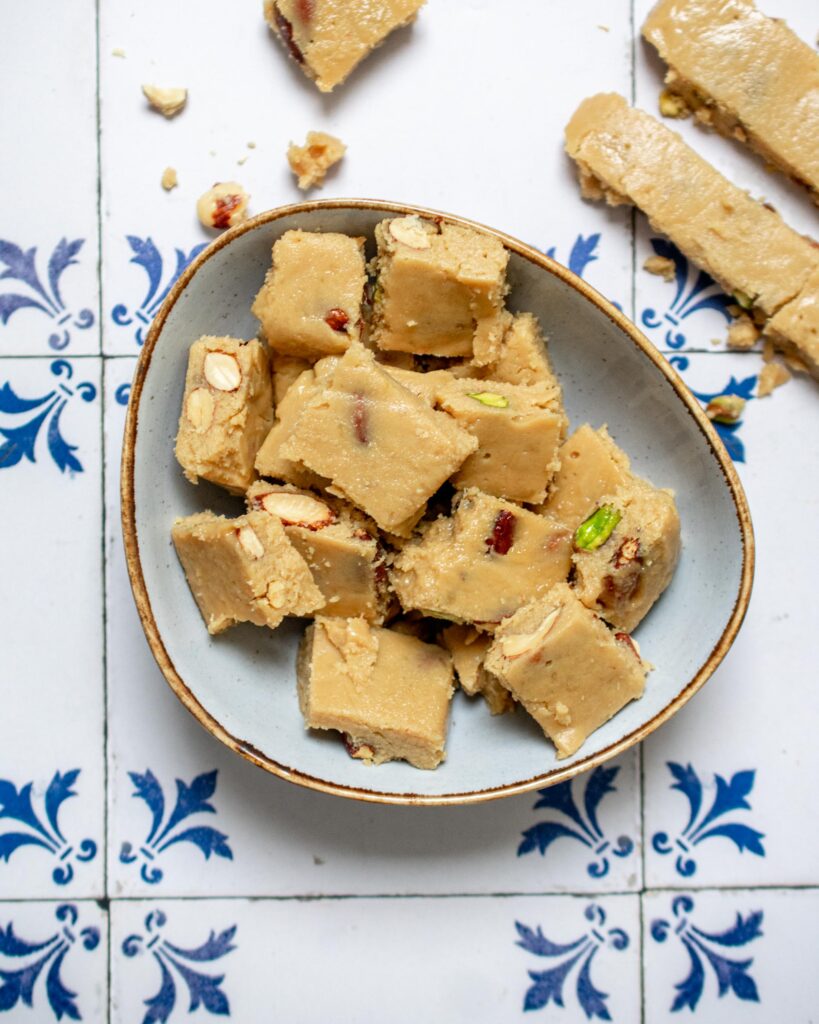
Tips & Tricks
For this recipe a candy thermometer is essential as it needs to indicate the temperature quickly and precisely so not to over or under cook the sugar. The temperature at what you finish cooking the sugar is what will make or break your Ħelwa! If you don’t have a candy thermometer, the second best option is a fast reading thermometer. It is highly unlikely to get a successful Ħelwa if you don’t use a thermometer.
FAQs
How to store Ħelwa tat-Tork?
Store the Ħelwa in an airtight container. You can either store in the fridge, where it can last several months. Although, be aware that the taste might change, especially if you store heavily string scented foods near it as the Ħelwa might take over some of the scents present in the fridge. You can also keep it at room temperature in a cool dry area. This will keep the Ħelwa safe to eat for a couple of weeks. In both cases the longer you leave the Ħelwa, the drier it will become.
How to enjoy the halva?
Traditionally, in Malta, the Ħelwa tat-tork is served straight up as is. You nibble on this sweet treat on its own served with a cup of coffee or tea. I also remember having it as a snack spread over a piece of bread. Lately, it’s become custom to make Ħelwa ice cream, which is served as is or as an accompaniment to imqaret! You can also use this delicious confection in your baked goods such as cookies, brownies, muffins, etc. Lastly, you can also add the Ħelwa to a savoury or sweet platter! This luxurious dessert is extremely versatile and any way you serve it, it will make your life sweeter.
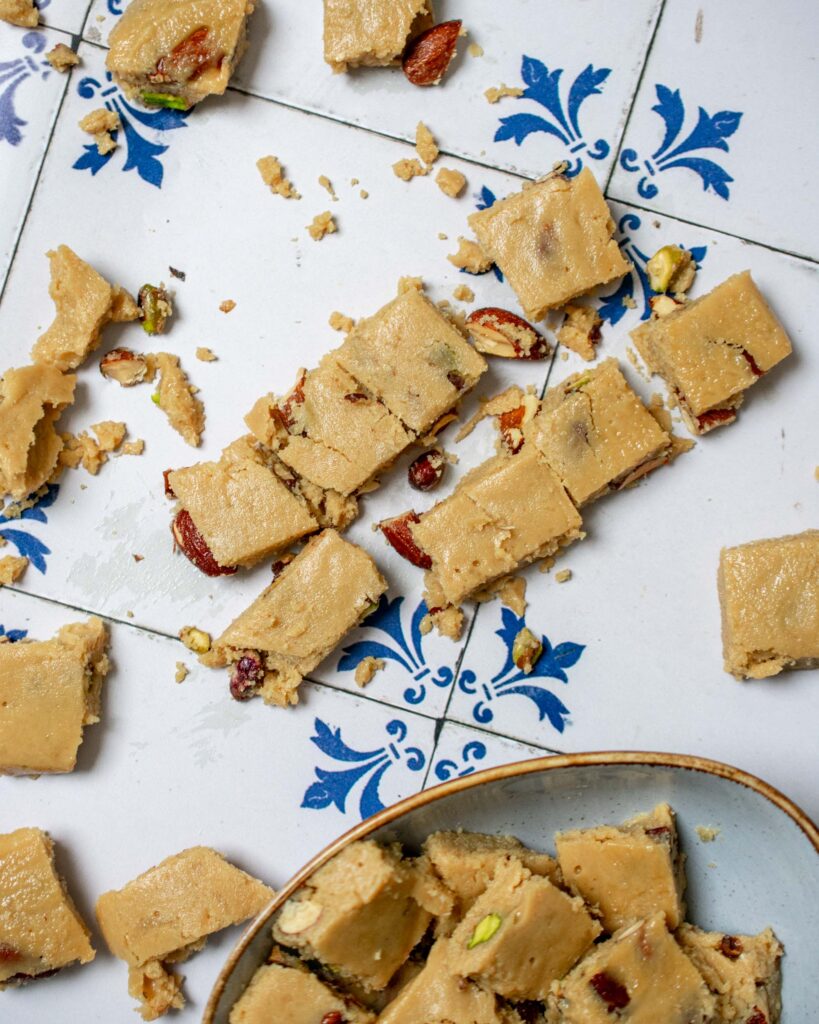
Why is my Ħelwa lighter in colour?
A pale light beige is the most associated with Ħelwa, however, the colour of the base is highly dependent on the type of tahini used! In addition, the colour will also vary depending on the toppings and flavours you add to the mixture.
Can I do different flavours?
The options are endless!! In the recipe here I’m providing the basic recipe, with the Maltese touch. However, you can experiment as much as you like with the flavour by switching the vanilla with other spices or syrups. You can also do toppings on top of your Ħelwa! Or even you can mix in melted chocolate or spreads to it. The options are truly unlimited.

Ħelwa tat-Tork (Maltese Halva)
Ingredients
- 260 g tahini
- 200 g almonds
- 200 g sugar
- 110 ml water
- 2 tsp vanilla extract
- 1 tsp salt
Instructions
- Prepare a dish or loaf pan with parchment paper. Set aside.
- Roast the almonds until slightly browned and fragrant.
- In a saucepan place together the sugar and water over medium heat. Bring everything to a gentle boil and wait until your candy thermometer shows a temperature of 120°C/248°F. This can take about 10 minutes.
- Whilst the sugar is reaching the desired temperature, in a separate bowl mix together the tahini, vanilla, salt and roasted almonds. As soon as the sugar reaches the desired temperature, stream it in gently into the prepared mixture and mix it in. Be careful not to over mix it.
- Add the mixture in the prepared sheet and store in the fridge and let rest at least overnight until it hardens.
Nutrition
If you have any questions, feedback or comments on this recipe, please leave a comment below. Please also rate this recipe by double clicking on the stars below. If you did make this recipe, tag @apronandwhisk and hashtag #apronandwhisk, as I’m curious to see what you create!
Don’t forget to subscribe to the mailing list down below so to receive the recipe updates straight to your mailbox!
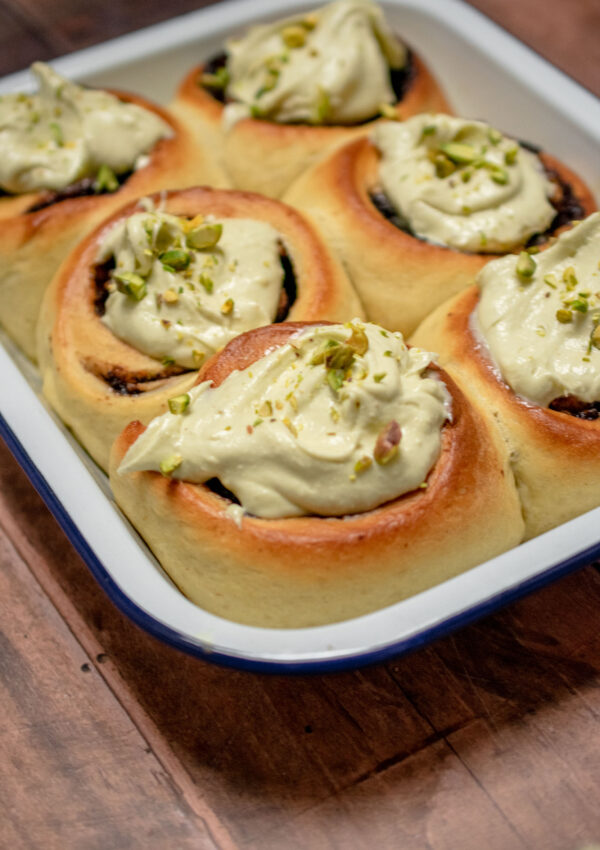

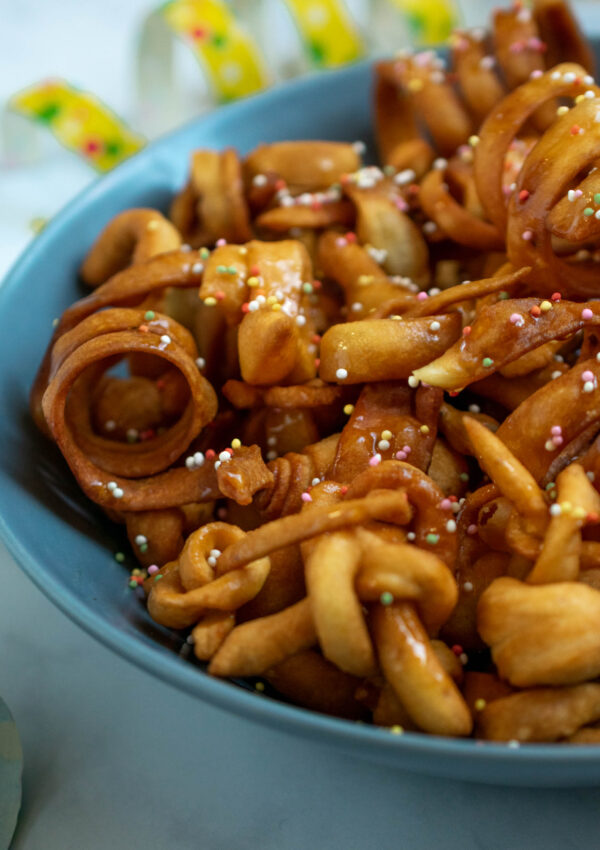
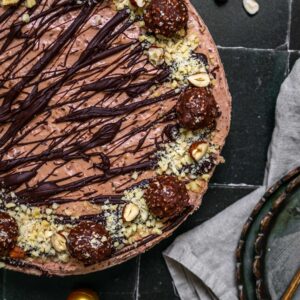



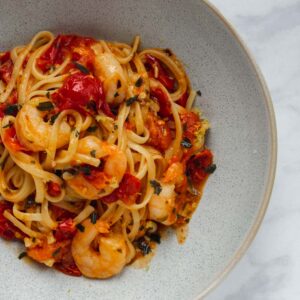



Hi
I posted this recipes ages ago and it is still on the net if you google it. It is my favourite since I were a kid.,
Some tweaks: no need for salt; if the temp is raised to 140C it will solidify immediately and there is no need to wait; if a dry day is chosen to do it the result will be better; stored in an airtight dry container it will last for years. Mine does!! Some oil might ooze out but it doesn’t lose any of its goodness; It can be eaten with Maltese bread – its neavenly.
It is nicknamed the poor man’s meal cos it is full of proteins, fats and carbs.
BTW for your info my recipe. is on net.cooks
Happy Christmas and God bless
Hi Joe! Thank you for sharing the information and great points 🙂 I have checked out your recipe post, well done!
I like to put a bit of salt in almost all of my desserts guilty (😂) and with the nuts, I like it’s addition here. I love having it with Maltese bread, that is how I used to have it when I was young and still living in Malta.
Wishing you a Happy New Year!
Lovely recipe – great taste!
My final product was waaay too crumbly 🙁 Any idea what could have gone wrong?
Thanks
Oh no! I’m sorry to hear that. Most probably the mixture was mixed a bit too much. When mixing it should be almost like pancake batter still without hints of it getting denser or harden already. It could also be the humid environment in Malta, as when it’s dry weather you get a better ħelwa.
Hope that this help and you can get a better one next time! <3
Hi Maria Raise the syrup temp to 140C and it will solidify real fast and so you too have to be quick about it.
Hope this helps. God bless
I wonder if I could make this with less sugar? Once I bought halva from abroad which was less sweet than we are normally accustomed to. The tahini taste was stronger too. But I’m afraid that if I reduce the amount of sugar, it will alter the texture of the halva. Any thoughts about this?
Unfortunately, I have never tried reducing the sugar further for this recipe as it’s a main ingredient not just for taste but also texture as you said. However, if you want to try reduce the amount, what I usually do is to start reducing the amount gently. For example, for my first try I would reduce 10g, the next 20g, etc. This way I monitor how much the sugar is impacting the texture of the ħelwa. Another option which I have seen in my research, for this recipe, is to substitute the sugar for honey, although you would need to reduce to amount to about 2/3 of the sugar and also the amount of water, as honey is liquid.
Hi, firstly thank you for the recipe. I made mine this morning and sadly it has not yet solidified. It’s been innthe fridge for some 4hrs already.
How crucial is it to bring the sugar to 120°C? I kept mine going for some time but it wouldn’t go higher than 105°C.
Hi! I’m glad you tried the recipe!
The temperature of the sugar syrup is actually very important here, as it affects the final texture. Heating the sugar to 120°C brings it to the “firm ball stage.” This stage is crucial because it allows the syrup to create a stable structure as it cools, helping your mixture solidify properly.
At 105°C, you’re in the “thread stage,” which doesn’t provide enough structure for firm setting. If your syrup didn’t reach 120°C, it’s likely the reason your mixture hasn’t set yet. You could try re-cooking the sugar syrup to the correct temperature next time, and it should give you better results.
Hope this helps, and let me know if you have more questions!
Go for a 140C temp. It solidifies immediately.